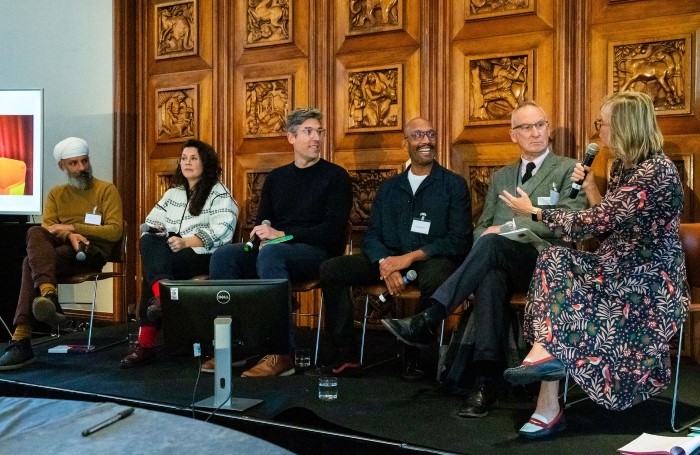This month, RIBA London spoke to DMBA who have four core principles that guide their approach and underpin the narrative of their projects. These foundations respond to many of the challenges we see in the built environment today:
- people
- craft
- value
- sustainability
DMBA also believe in pursuing greater ethnic diversity in architecture practice. Too often members of minority groups are marginalised in the construction industry, particularly young people trying to get a their foot in the door. This is why the practice not only plays an active role in shaping London’s future building environment, but also shaping the next generation of architects and designers.
Who are DMBA?
Currently a 15-strong practice, based in Borough, London, our team represent decades of solid experience across multiple sectors, with each of our team members having honed their craft in much larger architectural practices. With numerous successful retrofit projects under our belt, we pride ourselves on our ability to create beautiful, deliverable architecture which benefits the communities in which it is placed.
These complex refurbishments and extensions span across sectors such as commercial office, student accommodation, private high-end and affordable housing. We aim to bring joy, intrigue and delight.
What do you think is the most important issue for architects to focus on right now, and what are you doing as a practice to tackle it?
The climate crisis is the greatest challenge of our generation. The scale of what’s at stake and of the challenge of the transition of the construction industry and of our cities more generally to a net zero impact world is so great that playing our part in addressing it will be a career-long endeavour for most of us.
So, when we think about where to put our energies right now, where we see the challenges and opportunities coming up ahead for architects like us who want to be part of leading this transition, we are focused on developing our expertise in making the most of what we already have. Our existing building stock. Retrofit will not always be the solution but the imperative to retain and reuse materials is only gaining prominence.
What can come into conflict with the assumption of retention, is the requirement to meet greater and greater building envelope performance and health and wellbeing standards. This creates either scenarios where building performance is compromised in favour of conservation and retention of embodied carbon or cost increases that threaten viabilities that are often already marginal.
We predict this will soon lead to a sharp growth in instances where heritage or conservation clash with operational net zero ambitions. This is where we, as architects, will need to challenge ourselves to use our unique project position, skill set, and experience to thread that needle and demonstrate that great value can be found in revitalising our existing buildings giving something back to communities without taking away.
At DMBA we have developed an expertise in making the most of complex and constrained projects to deliver outcomes that are commercially savvy and deliverable as well as creatively ambitious and that make a positive contribution to the city.
To make sure we continue to bring that value to our projects we are investing in training, research and processes that will ensure we are anticipating the challenges that are several years ahead on the horizon.
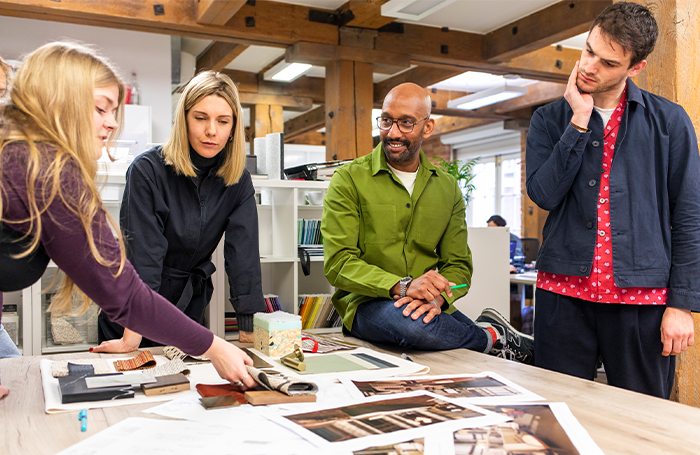
What do you think architecture practices need most support with during this time of economic uncertainty?
A key area in which many studios need support in these trying times, is the knowledge and empowerment to propose fees commensurate with the responsibility they are held to.
It’s evident that salaries and fees have stagnated recently, and yet the risks and responsibilities of an architect have increased. This brings us perhaps onto a bigger, industry-wide dilemma of architects under selling their worth, and therefore diminishing our professional value.
Not only is this a commercial issue, businesses will fail if they are not adequately remunerated, and therefore projects suffer also, but it’s also incredibly erosive.
We as architects pride ourselves on crafting beautiful, long-lasting impressions on society. If we are not rewarded, valued or credited for these imprints, how will the profession as a whole progress?
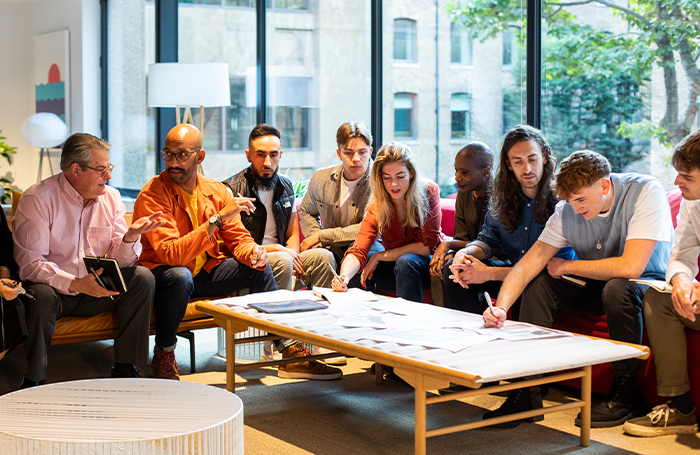
Where do you look for inspiration?
We all have a love for the ‘craft’ component of architectural design. Wherever we are lucky enough to have the opportunity, we relish being involved in the complete process of making buildings, from strategic discussions through to completion and occupation.
This makes us very concerned with follow-through of design intent and the quality in the finished product. As a result, we find inspiration for our work in building materials themselves and the processes that create them. This naturally also means we find ourselves drawing on the physical qualities of the existing buildings that are the subject of, or neighbours to our clients projects.
As we are often working in dense urban contexts, trying to find sensitive yet characterful solutions to augmenting and revitalising buildings, we find inspiration in cities across the world. We are always sharing great examples we’ve come across between us in the studio, especially when gathering for design workshops.
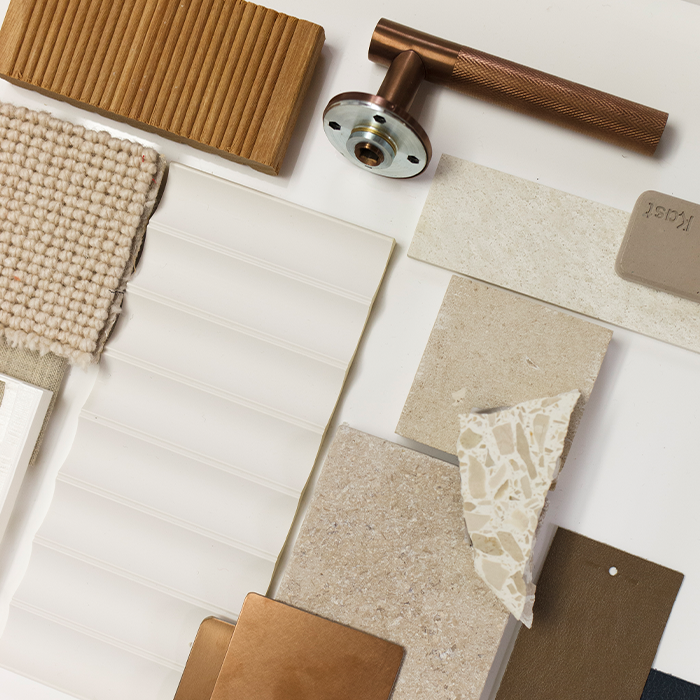
How does the use of augmented reality affect your design process?
Through his role as a contributing architect to BBC’s Your Home Made Perfect, Damion has seen first hand the power that VR and AR can have to delight and engage emotionally a client with a design.
These technologies have the potential to greatly broaden the accessibility of design, particular to non-professional clients and end users. It has always been the challenge of the architect, one that we’ve often not met, to communicate our ideas, values and proposals to a range of stakeholders.
This requires a variety of mediums and the agility to switch between these. Like any medium, as powerful a tool as VR is to place someone at scale in a photo-realistically rendered environment, it still has its limitations - not least, for us as craft and materials focused designers; the weightlessness and lack of tactility. There will always be a need to return to the fat pens and sample library to communicate, test, and play with ideas in a fast and cost-effective manner.
Not all projects and circumstance will warrant the investment in developing 3D rendered environments that VR and AR require but as with any emerging technology we expect to see the hurdles lower further and further. Perhaps one day we’ll be picking up the goggles as readily as we do a pen?
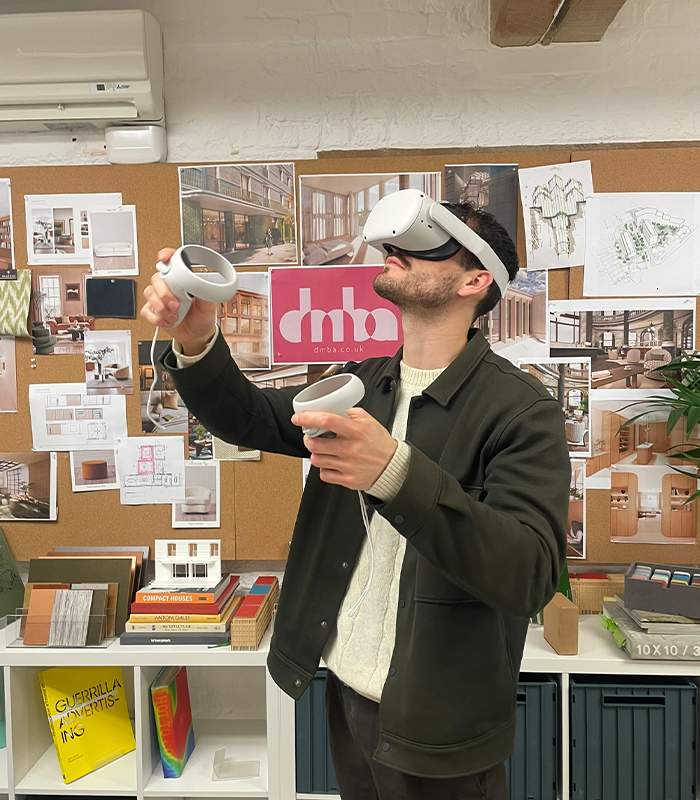
How do you think we can make architecture more accessible to people of all backgrounds?
This is a question that gets to DMBA’s very core. Our founding principles are derived from issues we see in the world today - one of them being the inaccessibility of the profession, both to prospective students and building users more widely.
DMBA financially and physically supports the fantastic charity icanyoucantoo, which provides opportunities for young people to gain work experience in industries that may be difficult to enter. This includes CV and portfolio reviews, providing work experience, whilst also supporting the charity with a cash donation each year.
Making architecture more accessible to the wider community is a big part of DMBA’s Founder, Damion Burrow’s, role as RIBA London Regional Chair, Co-Chair of the City of Westminster and Lambeth Design Reviews Panels, and panel member for the Royal Borough of Greenwich DRP.
It is within these panels, Damion will encourage discussion and debate predominantly centred around inclusivity and sustainability, which in turn we hope will lead to positive change.
Historically, architectural discussions were limited to those already within the profession. Now we are surrounded by talks of our built environment 24/7. We absorb it through social media, tune in via our podcasts, and watch it on our forever-expanding TV subscriptions. Architecture is more accessible than ever, and DMBA are frankly delighted.
How do you see the role of the architect changing in response to the evolving urban landscape?
Increasingly often, DMBA are being asked to sit down with a client at the very start of a project and voice our opinions on the strategic objectives of the scheme. These discussions feed into their core viability, and more often than not, we are being asked to imaginatively reinterpret or adapt the original purpose of the building.
We see commercial buildings being transformed into student accommodation; agricultural buildings converted to residential. These changes of use are a fantastic exercise in challenging our pre-conceived ideas of what the end result “should” look like- whilst providing exciting parameters to work within, and respecting the retrofit process we primarily encourage.
